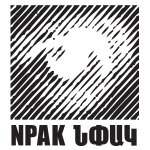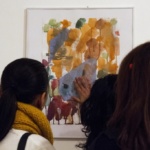Art is a world without language, accessible to anyone anywhere, any time. Art has no boundaries, it is a medium available to any person around the globe. Art education and art therapy are two tools which help people to express their emotions, thoughts, and desires in a productive and creative way. One community in particular which greatly benefits from art education and art therapy has been the autistic community, children and adults who, due to their autism, often cannot express themselves in words either clearly or at all. Having an outlet that is expressive and/or therapeutic is extremely beneficial to them. Having a space where there are no expectations, no rules, no right or wrong way of putting a mark on a page, helps these individuals with autism get away from the constant pressures of “should” and “should not” within society, and allows them easier access to their inner selves and to their emotions. All of this is represented through their artwork, through the utilization of color, texture, brush strokes, materials, etc.
This international exhibition brings together two schools for children with autism which have a strong focus on educating and healing the child through art. The International Child Development
Center is based in Yerevan, Armenia and creates a holistic, therapy-based approach for the child.
During art therapy activities, each child is in charge of his or her own activities, creating any kind of work he or she wants to that day. This unrestricted approach allows the child to freely access his or her emotions and creative voice. Each student has a preferred medium, a favorite color, and an activity of interest. Many also have their own unique painting or drawing styles, some of which can be seen in this exhibition. Giving them the freedom to create allows these preferences and styles to shine through their artwork.
The Boston Higashi School is based in Boston, Massachusetts, USA, and educates their students through a holistic approach called Daily Life Therapy. The founder, Dr. Kiyo Kitahara, observed that many of her students with autism showed a greater interest and skill at writing than they did at drawing. Using this insight, she and her art teachers immersed the students in copying lines and shapes. Through step-by-step practice, the students could eventually put the shapes together to make images and eventually scenes. This led them to be able to draw a simple still life, a portrait, and landscapes from observation once they had the fine motor skills to manipulate the pencil and the concept of line to reproduce what they saw. This style of art education continues today at Boston Higashi School.
This exhibit displays a wide variety of creative art from an even wider variety of learning styles and levels of perception, all from students on the Autism Spectrum. Some of these works are the result of the step-by-step process and were completed with the teacher’s help so that the students can take pride in a meaningful finished product. Others have been completed with very little teacher guidance. In both cases, careful attention was given to allow the students to use and develop their fine motor skills as well as their own sense of expression.
Curator: Alana Tashjian
Cordinator: Arpa Hacopian










